Please use the following link to download the October 10, 2020 issue of the syəcəb
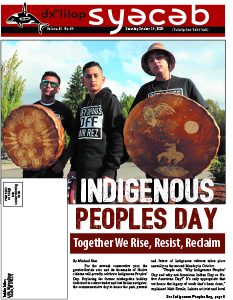
syəcəb
Please use the following link to download the October 10, 2020 issue of the syəcəb


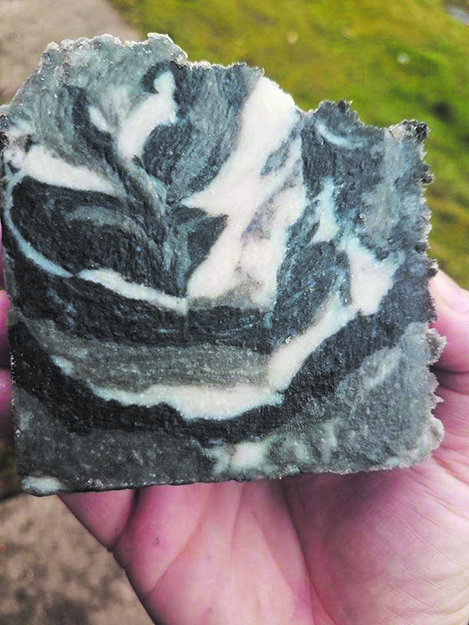
By Kalvin Valdillez, Tulalip News
“Everybody sees soap as this magical thing, and it is kind of magical,” said Tulalip tribal member, Amoreena Anderson. “It cleanses your pores and takes away all the dirt and bacteria off your body, binds it to a molecule and washes it away.”
At a young age, Amoreena found her passion while on shopping trips with her mom in Mount Vernon. Little did she know of all the lives she would positively affect when she was drawn to a section of a local food co-op where they sold handcrafted soap, and her teenage, curious mind began to wonder how soap is made.
“My mom used to take me to the Skagit Valley Food Co-Op and they would have all these handcrafted soaps, I was always interested in knowing how they were made,” she said. “My mom told me she made soap before and I would probably learn when I got older. From that moment on, I was completely into it.”
She spent the next few years researching how to craft soap. If the co-op visits were the prelude to her journey in soap making, the first chapter took place in 2012 when she began experimenting and created her first product, which was a big hit amongst her family and co-workers.
She stated, “I have carpal tunnel and was always typing as a data entry clerk, so I started making shea butter body whip, basically whipped shea butter that I would add essential oils and vitamin E. My friend used to trade me massages for the body butter, it was for her child who had a skin condition. I believe all the high-end essential oils are wonderful, they reap all the benefits that you could use and I really wanted to know more.”
Amoreena explained that after receiving positive reviews about the body butter and learning more about essential oils, she was ready for the next challenge. Purchasing her first home in 2013, she now had the necessary space to fully immerse herself into her passion project.
“I had a typical first timer experience as I started perfecting my methods and recipes. They have soap calculators online that are very helpful in helping you get the right consistency. Cleansing and moisturizing are the two most important factors. Depending on your skin type, you can modify each batch to meet your specific needs. And then there’s also the oil properties; soy bean, coconut, shea butter, a lot of exotic oils that all have different properties. Pretty soon I had a lot of people who wanted to buy soap from me, so I start selling soap. But, I wanted to do more.”

“I had a typical first timer experience as I started perfecting my methods and recipes. They have soap calculators online that are very helpful in helping you get the right consistency. Cleansing and moisturizing are the two most important factors. Depending on your skin type, you can modify each batch to meet your specific needs. And then there’s also the oil properties; soy bean, coconut, shea butter, a lot of exotic oils that all have different properties. Pretty soon I had a lot of people who wanted to buy soap from me, so I start selling soap. But, I wanted to do more.”
Growing up Tulalip, she learned about the traditional lifeways of her people and knew a great deal about harvesting and the medicinal properties that plants contain. She wanted to expand her knowledge on the subject of herbalism even more to incorporate different plants and herbs into her soaps, salves, candles, bath bombs, and lotions to help people with their everyday ailments. She enrolled in an herbalist course to get a better understanding of the healing abilities that various plants offer.
“I took a class to learn different ways I could incorporate a holistic approach, to help people heal their skin issues and symptoms because a lot of herbalism can treat those symptoms,” said Amoreena. “Depending on the plant you’re using, some of these plants are adaptogenic and they alleviate and eliminate symptoms completely. I really feel like I’m doing my best work, sharing my passion for my work in general to give to my community. Whether it be information or product, it’s very empowering and uplifting and I like to not only give to them, but ask them if they would like to make soap with me, if they want to go harvesting with me, or if they want to sit in and watch.”
Amoreena’s soap making journey was off to a great start. In fact, if her story was a biopic on the silver screen, the next few years would play out like a montage as her business, known officially as Coast Salish Soaps, took off. Not only was she selling soap to multiple families within the Tulalip community, her products were being shipped nationwide and could even be found for sale in other countries such as Canada, Italy, Japan, Germany and England. The quality of her products was spoken of highly by her clientele who provided testimonials and side-by-side before and after pictures to back up their reviews.
A major component to her success is the fact the she shares her knowledge with her consumers. When people approach her with different skin issues they wish to address, she not provides them with a product that works, she explains why it will work, what to expect and how the issue may have arisen in the first place.
“I really do care,” expressed Amoreena. “I have sensitive skin. My kids have sensitive skin. A lot of it stems from the food you eat. Your liver is basically your body’s second brain, and your skin is the largest organ on your body. Your skin is considered to be your second liver. Everything your liver doesn’t process out, comes through the skin and you end up having skin eruptions; eczema, cirrhosis, endocrine diseases are linked to the liver and heavy metal. There are so many people who suffer from skin flare ups like dry skin, rashes and they don’t know where it comes from.”
She continues, “When you go all natural with handcrafted soaps like I make, sometimes you go through a detoxing process for your skin and it’s weird for the first two weeks, but then you’re all good. A lot of people say soap irritates their skin and think what is sold over the counter is soap, when it’s not actually soap, it’s chemicals. People like it because it doesn’t leave soap scum, one of the complaints that happens regularly with handmade soaps. But then they’ll notice their skin is a lot drier, itchier, and tight-feeling, and that’s because their using surfactants versus soap. With what corporate America gives the public to use, small-business-handcrafted-soap-makers are really valuable people inside their communities, to bring that knowledge back to people. It’s empowering for a lot of people to take back control on what they use on their bodies.”
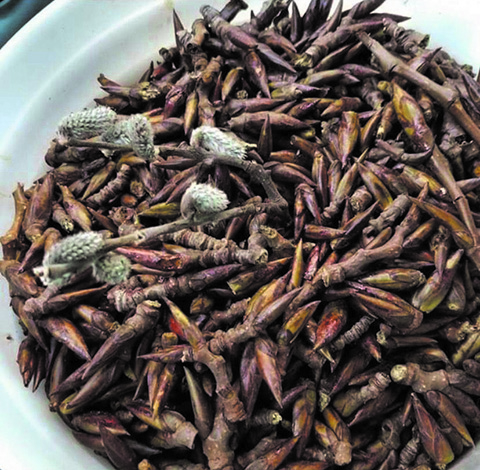
All great success stories are not complete without trials and tribulations, and Coast Salish Soaps are currently weathering a momentary hiatus brought forth in the form of an injury when Amoreena took a spill and broke both of her wrists. Although she hasn’t been in business for about a year, she still receives requests on the regular. When she has the necessary helping hands from her kiddos and plenty of notice in advance, Amoreena will occasionally concoct a batch of soaps to donate for local memorials and funerals in the Tulalip community.
“I usually have a feeling of gratitude when I do my work. When I’m called upon to make soap for memorials, or funerals for our give away practices, I always try to oblige. An important part of our culture, in the potlatch system, is our giveaways.”
Amoreena wants her loyal customers and interested parties to know that her love and passion for soap making hasn’t faltered through trying times, and that she plans on elevating her brand once she is back to 100% and healed from her injury. And although she constantly works with Native plants of this region, such as Devils Club, and has even rendered bear fat to use in her products, she wants to incorporate more traditional teachings and medicine into soaps and creations.
“One of my favorites to make is the emulsified sugar scrub because you’re in total and complete control of how moisturizing or cleansing it is, and how silky it’s going to turn out and how much lather it will have. My healing butter infused with plant medicine is another favorite. Soap is my favorite, that’s a given because that’s the base of my business. I like to make lotions and heavy creams upon request. Liquid soap is most definitely up there, people really like the liquid soap. My son’s out fishing and he’ll come home and it will take the fish smell right out of his skin. Any stinky smell, it’s just gone, don’t have to re-wash your hands from anything potent smelling. It’s really good for your skin too, it doesn’t leave it over dried.”
To stay updated on the latest news about Amoreena and Coast Salish Soaps, please join the Coast Salish Soaps group on Facebook and be sure to give their business page a like as well. Amoreena may not be selling products at this time, but she is always willing to share the knowledge she has attained over the years with those who are inquiring.
She expressed, “My goal with my business is to empower the people, to give back to the community. It’s important that we uplift each other and share our knowledge to keep our Tribe and our community empowered. You’d be amazed at what a bag of liquid soap, that’s full of essential oils, can do for somebody’s mental health just by that ritual of showering and inhaling the essential oils in the steam.”
Did you know?
By Kalvin Valdillez, Tulalip News

The film festival lives on! With each year that passed since the Hibulb Cultural Center (HCC) first announced the Film Festival, more and more participants found community by bonding with other likeminded creatives at the yearly Fall time event. Each year the film festival culture grows stronger as Indigenous filmmakers, actors, and storytellers showcase their art to the public. The festival is open to all who work in film, whether you live locally or a few states or continents away, everyone is encouraged to take part in the festival and several filmmakers, scorers and screenplay writers from around the world submit their works each year.
“The film festivals began at Hibulb to celebrate films and filmmaking, and to highlight Coast Salish communities as well as communities around the world and the values that we share,” explains Lena Jones, HCC Education Curator and Film Festival Organizer. “There is always an international element to our festivals that remind us of the beauty of the world.”
In years past, the event typically occurs throughout the course of an entire day and movie lovers are treated to multiple screenings in both the HCC classrooms and longhouse. The participants who submit their films provide an introduction before the film plays and afterwards, they explain in detail the intricacies of each scene and answer any questions from the audience, allowing the creatives to fully engage about all the specifics that go into making a film.
Lena expressed, “We believe it is important to celebrate Indigenous filmmakers and actors because they carry our voice and perspective into the world, a perspective that is much needed during these times. They provide role models for our younger generation with their strong, healing messages. They uplift their communities. We know there is so much talent in our communities and so much knowledge to draw from in our heritage.”
With local events throughout the nation being pushed-back or canceled completely due to the coronavirus, it is refreshing and exciting to see the continuation of the film festival, especially since last year’s event drew many spectators and submissions. And although the HCC is open to the public, with many safety measures and practices in place, they are taking an extra-cautious approach to this year’s festival because of the infectious disease and are proceeding with the event digitally.
“The show must go on,” said Lena. “This year the festival will be virtual. We will livestream the film awards and lifetime achievement awards on our Hibulb Cultural Center Facebook page at noon on November 7, and we will post links of the films for folks to view. An audience award will be given this year on the film selected by the audience as the overall best film.”
Over the past eight years, the festival has welcomed several genres of films such as music videos about rez love, fantasy films, documentaries about local tribes and their people. Local cinephiles are often treated to a look into tribal lifeways when films regarding sovereignty, treaty rights, harvesting, and art are shared during the festival.
Some films feature songs and on-screen interactions that are spoken and sang in the filmmaker’s Native language, such as fan favorite films by Tulalip Filmmaker, David Spencer Sr., Waiting for Blackberries and I Am Frog in which the film’s dialogues are spoken entirely in Lushootseed.
“The films are diverse. Each year we pick a theme for the festival,” said Lena. “This year is ‘Past, Present, and Future’. Our judges, Swinomish tribal elder and filmmaker Robin Carneen, filmmaker Mike Van Luvan, and chef and film consultant Brit Reed all bring unique and inspiring perspectives to our film festival. We’re honored for their help and expertise.
“We accept all films. In the past we’ve received historical and biographical documentaries, animations, romance, fantasies, thriller films, action films, comedies, music films, experimental films, and sci-fi films.”
So far, the HCC has received five film submissions including, Bittersweet Life as We Know It by Julie Antony, Nobody Cares by Tim Fraser-Granados, Salish Cedar Canoes by Costa Boutsikaris, The Battle of Blythe by Robert Lundahl, and The Vision, Death, and Ghost of Isaac Ebey by Jefferson Elliot. The Film Festival will continue accepting submissions throughout the month of October as they gear-upfor the 8th Annual Hibulb Cultural Center Film live on Facebook, November 7th.
“It is important for the festival to continue,” Lena stated. “There’s so much history, heritage, diversity, and beauty in our communities. Our cultures and values are medicine to our communities. This is one way to keep spreading the wisdom and highlighting the ideals of our ancestors. We would be happy to receive more entries for our festival. The entry form can be found on our Hibulb Cultural Center website, Film Festival 2020, https://www.hibulbculturalcenter.org/Events/Film-Festival-2020/. Then e-mail me the form along with a link to your film. My e-mail address is lejones@hibulbculturalcenter.org.”
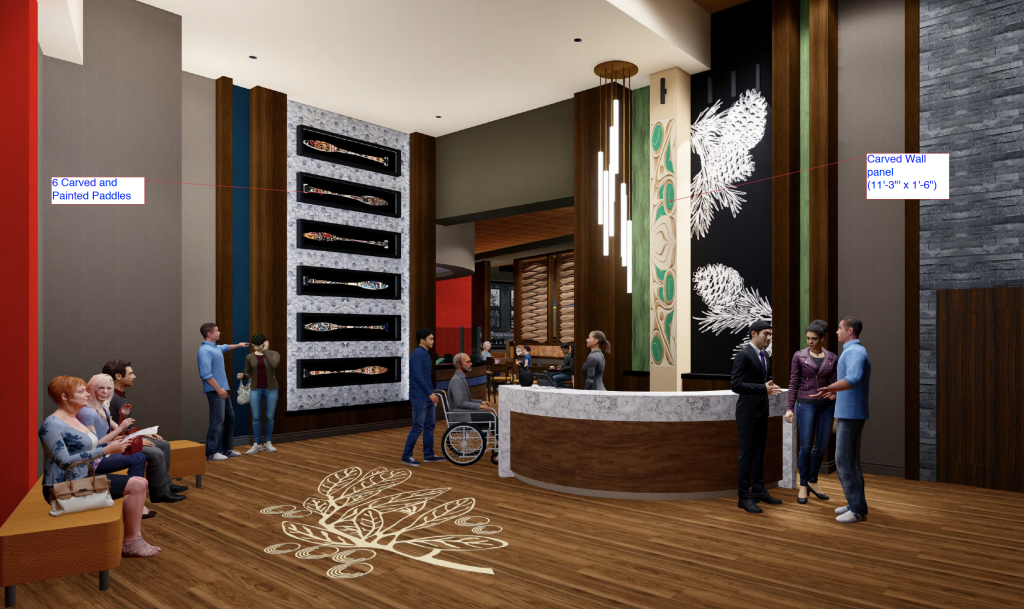
The Landing Restaurant at the new Quil Ceda Creek Casino October 2, 2020
1.0 Introduction:
The Quil Ceda Creek Casino (Owner) is soliciting request for proposals for artwork from enrolled Tulalip Tribes members for the design and production of artwork for ‘THE LANDING’ restaurant, which will be located within the new Quil Ceda Creek Casino. The casino is currently under construction with a scheduled opening date in early 2021.
The restaurant design is themed around the annual Pacific Northwest Tribal Canoe Journey specifically focused on ‘The Landing’ and the hospitality provided at each stop along the journey. The purpose of this request, is to seek proposals for custom designed artwork that will advance the story of “THE LANDING”.
The following is a narrative description of “THE LANDING”. This narrative will be printed on the restaurant menus.
The annual Tribal Canoe Journey is an ancestral summer tradition bringing together the people of the Pacific Northwest Tribes to celebrate the connection to salmon, water and each other. Canoes leave from their homeland and travel to the host tribe for a week of festivities. Depending on where the canoes are launched, the Canoe Journey can take up to three weeks of paddling through open waters.
As the canoes travel to the host tribe, the canoe families paddle for an average of eight hours a day and take breaks on beaches or supporting boats. At night, the canoe families stop at a designated tribal location to eat and rest. When conditions are optimal and the tide is just right, the canoes set out again until they reach the host location.
The host tribe formally grants the visiting canoes permission to come ashore (“The Landing”). Throughout the weeklong celebration and potlatch, the visiting tribes are fed, provided with a comfortable place to rest, and share songs, dances and stories of their travels through the open waters of the Salish Sea, Pacific Ocean, Strait of Juan de Fuca and the Puget Sound.
Like many traditions, the Canoe Journey was lost until the Maritime Committee of the Washington State Centennial Commission developed the Native American Canoe Project in 1987. The first step in reviving the tradition was to find suitable old-growth cedars of sufficient length and diameter, plus locating knowledgeable craftsmen to carve the canoes for the journey.
Seventeen Puget Sound tribes participated in the inaugural 1989 Paddle to Seattle Canoe Journey. Since then, the annual event has expanded to include more than a hundred tribes and First Nations from Western Washington, British Columbia and Alaska, but also from as far away as Hawaii and New Zealand.
As part of this tradition, we welcome you, our valued guest, at “The Landing.” Rest, eat and share stories of your adventures. We raise our hands to you in the traditional Tulalip greeting: a warm expression of welcome and friendship, harmony and hospitality. It is a greeting that says you are our guest, you are under our roof, and you are part of our family. Welcome!
2.0 Artwork:
The Owner has identified ten (10) individual pieces of carved artwork to be located within the restaurant. While the final design of each piece will be created by the selected artists, the location and size of each piece is shown in the conceptual architectural renderings included in Exhibit 1 and as noted below. The cedar will be provided by the Owner, but selected with the guidance of the chosen artist(s) to provide consistency in materials between the various art pieces. Paddle blanks for the paddles will be provided by the Owner to the Artist. All artwork is to be considered art gallery or museum quality. The building contractor will mount the artwork to the building or within casework under the direction of the artist and Owner. The artwork to be provided includes the following:
Carved Artwork
6 carved and painted cedar wood paddles (traditional sized paddles of approximately 57 inches in length to fit within a 6 ft. – 1/2 in. x 1 ft. – 6 in. lighted enclosure) The paddles shall include carved and painted images on one side of the paddle. The Owner is open to the carved paddles being provided by one or more artists under one proposal. If a proposal includes multiple artists, each artist shall be identified and images of their work shall be included within the submittal with the scope of work for each artist clearly identified in the proposal. A proposal that includes a team of artists shall also include how they plan to work together to create a unified design and message that brings life to the meaning of “The Landing”.
3 carved cedar wood panels: 7’-9” x 1’-0” each (the depth is anticipated to be approximately 2 – 4 inches. The final depth will be determined by the selected artist(s) and the Owner) It is anticipated that these will not be painted pieces, but the Owner is open to collaborating with the artist(s) to determine the finished condition based on the artist’s
design and recommendation. Consideration of the finish will include that these pieces are exposed and open to guests being able to touch the carved panels.
1 carved cedar wood panel: 11’-3” x 1’-6” (the depth is anticipated to be between 2 – 4 inches. The final depth will be determined by the selected artist(s) and the Owner) It is anticipated that this will not be a painted piece, but the Owner is open to collaborating with the artist to determine the finished condition based on the artist’s design and recommendation. Consideration of the finish will include that this piece is exposed and open to guests being able to touch the carved panel.
The Owner intends that all carved panels shall be consistent in size, material, and general design so that they create a consistent look and feel that jointly tell the story of ‘The Landing’. Each carved panel shall be a separate design. The Owner is open to the carved panels being provided by one or more artists under one proposal. If a proposal includes multiple artists, each artist shall be identified and images of their work shall be included within the submittal with the scope of work for each artist clearly identified in the proposal. A proposal that includes a team of artists shall also include how they plan to work together to create a unified design and message that brings life to the meaning of “The Landing”.
3.0 Pre-qualification Criteria for Submission:
4.0 Form of Proposal
5.0 Timeline:
6.0 Selection Process & Notification:
7.0 Compensation
8.0 Acceptance or Rejection of Proposal
The Owner reserves the right to reject any and/or all Proposals. Owner also reserves the right to waive any information and technicalities. The Contract(s) will be awarded to the artist(s) that the Owner believes to be in the best interest of the Project. Each Proposer is responsible for all their own costs associated with responding to this RFP and any expenses incurred by the Proposer in the selection process.
9.0 Proposals & Submittal Schedule
Proposals must be received by 2:30 PM on October 16, 2020. Proposals received after the time and date stated will not be accepted.
Proposals shall be submitted in an 11 x 17 sealed envelope and clearly labeled and addressed as follows.
Request for Proposals:
Quil Ceda Creek Casino – Artwork Address:
Quil Ceda Creek Casino
Attention: Alicia Watson-Jones
6410 33rd Ave. NE
Tulalip, WA 98271 Proposals shall include 3 hard copies Proposals will be opened privately
Proposers may be asked to participate in a personal interview with members of the selection committee if the selection committee deems necessary.
Owner intends to make final selections by October 21, 2020 and to immediately enter into contracts with the artist(s) the Owner believes is in the best interest of the project. All Proposers will be notified of the artist(s) selected to complete the work.
10.0 Questions
All questions shall be directed to Eric Guion, Owner’s Representative for Tulalip Tribes Quil Ceda Creek Casino. All questions must be delivered by electronic mail (email). Questions will be received up to 5 days prior to the Proposal submittal date.
Contact Information Eric Guion
Email: Eguion07@gmail.com
Phone: 206-910-1089
11.0 Jurisdiction
The Laws of the Tulalip Tribes shall govern
12.0 Non-Collusive Understanding
Each person and/or firm submitting a proposal thereby certifies that they have not colluded with any other person, firm or corporation in regards to securing or providing the artwork being solicited.
Confidentiality, Non-Disclosure & Ownership of Documents
All materials provided by the Owner to the Proposer are considered confidential information and shall remain the property of the Owner. The Proposer shall keep in confidence and shall not distribute, disclose, disseminate, or use, for its own benefit or for the benefit of others, in any manner or form, any confidential information received from the Owner, unless and to the extent specifically authorized in writing by the Owner. The Proposer shall use its best efforts to protect and guard the confidential information from disclosure and/or use by any person in violation of this Agreement.
Submitted proposals shall become the property of the Owner, for historical reference only. Proposers are advised to make copies of their work since the proposal will not be returned unless specific materials are identified by the Proposer. Materials the Proposer would like to have returned must be identified in the submittal package. The Owner takes no responsibility for the loss of any submitted materials.


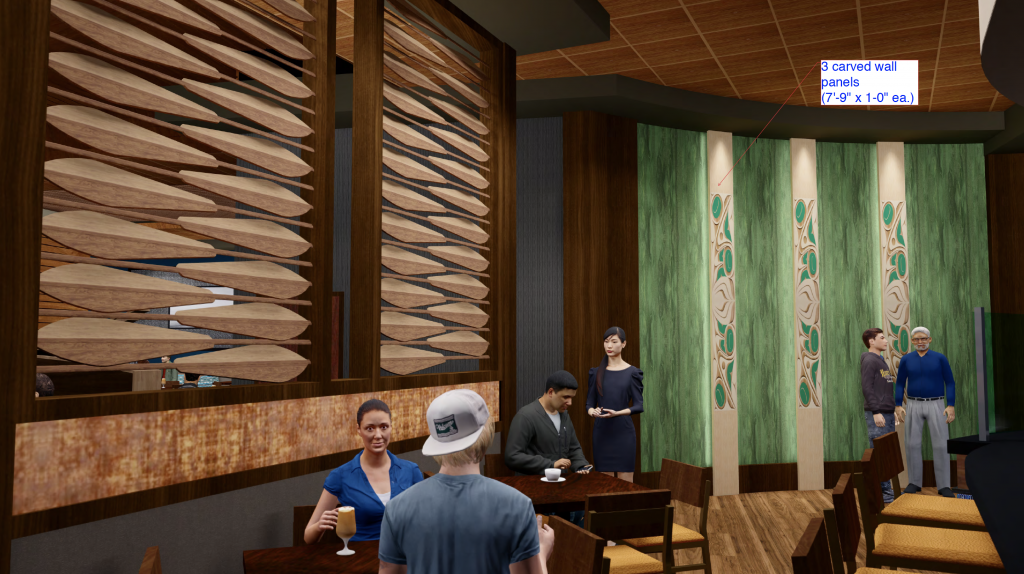


Please use the following link to download the October 3, 2020 issue of the syəcəb
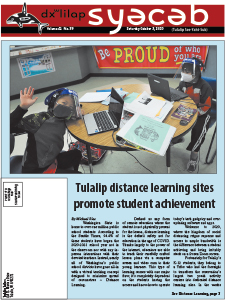
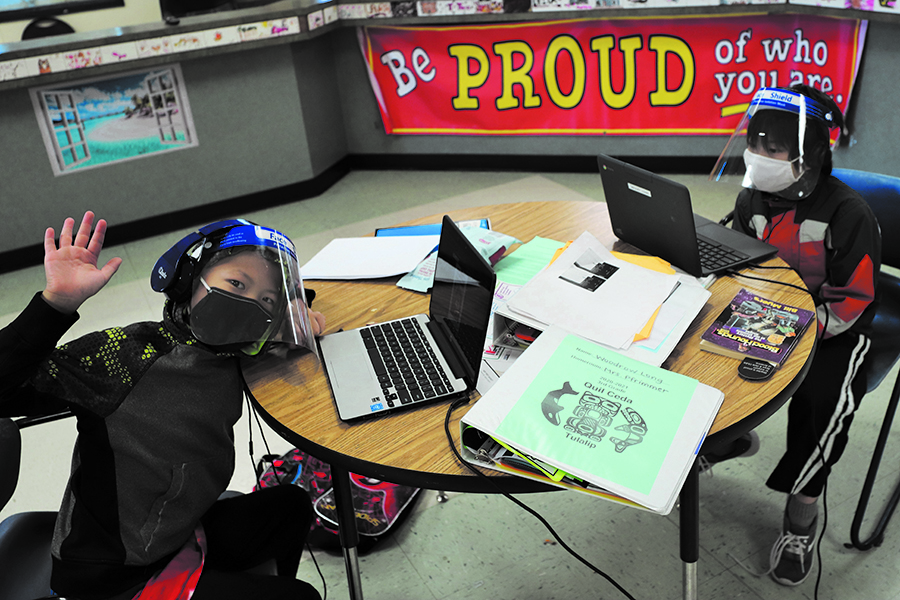
By Micheal Rios, Tulalip News
Washington State is home to over one million public school students. According to the Seattle Times, 94.4% of these students have begun the 2020-2021 school year not in the classroom nor with any in-person interactions with their devoted teachers. Instead, nearly all of Washington’s public school districts have gone all-in with a virtual teaching concept designed to minimize spread of coronavirus – Distance Learning.
Defined as any form of remote education where the student is not physically present for the lesson, distance learning is the default safety net for education in the age of COVID. Thanks largely to the power of the internet, educators are able to teach their carefully crafted lesson plans via a computer screen and video cam to their young learners. This type of learning comes with one major flaw; it’s completely dependent on the students having the access and know-how to operate today’s tech gadgetry and ever-updating software and apps.
Welcome to 2020, where the kingdom of social distancing reigns supreme and access to ample bandwidth is the difference between a student achieving and being irritably stuck on a frozen Zoom screen.
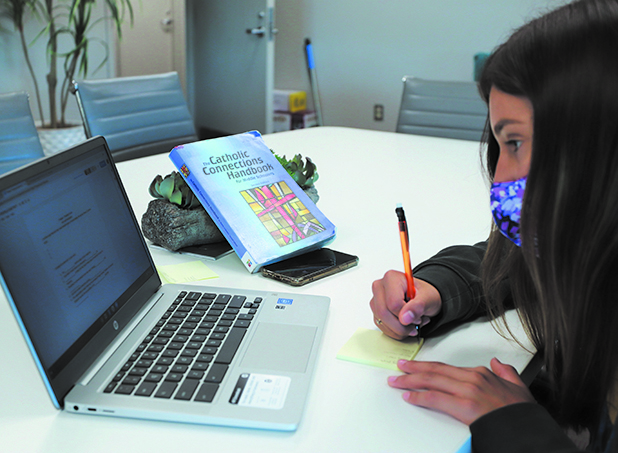
Fortunately for Tulalip’s K-12 students, they belong to a Tribe who had the foresight to transform the reservation’s largest two youth activity centers into dedicated distance learning sites. In the weeks leading up to the new school year, the Tulalip Teen Center and Boys & Girls Club received critical network upgrades to ensure a high-demand of bandwidth could be sustained, turned typical activity and gaming rooms into spaces that encourage learning, and instituted COVID guidelines such as temperature checks, mask enforcement, and social distancing.
“The health, education and overall success of our students is our top priority. The Tulalip Education Division and the Tulalip Boys & Girls Club are working hard to provide support in the safest environment possible,” stated Jessica Bustad, executive director of education. “Together we can ensure that our students begin thriving during these uncertain times. We wrapped up our second full week of Distance Learning and are improving services provided to our students. We are very proud of our young people who are showing up and doing the best they can.”
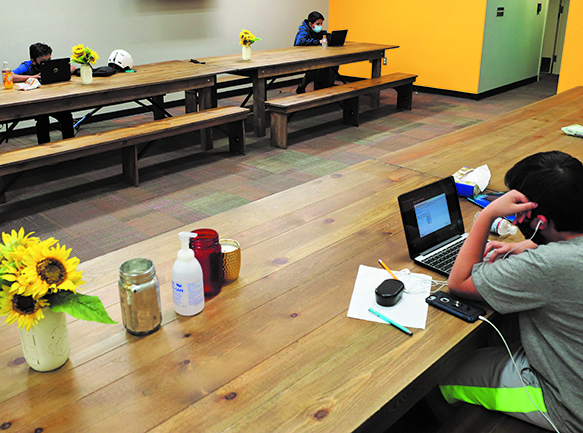
Change can come into our lives as a result of crisis, as a result of choice or just by chance. Being unprepared and resistant to change leads to fear, hostility and a sense of hopelessness. Embracing change and managing all its challenges in a constructive way is key to not only surviving, but thriving in an ever-changing world.
Adapting to change is what the devoted staff of both distance learning sites and the many young minds who attend on a daily basis exemplify. Primarily accommodating Kindergarten – 5th grade students who require much more attention and emotional reassuring, the usual Boys & Girls Club activities specialists are now de facto educators.
“We are no longer a traditional boys and girls club. We’ve become a school-like learning center,” said Diane Prouty, administrative assistant for the Club. “We have 98 kids registered and average about 70 kids per day. We separate them by grade level, so 1st graders are together, 2nd graders are together and so on.
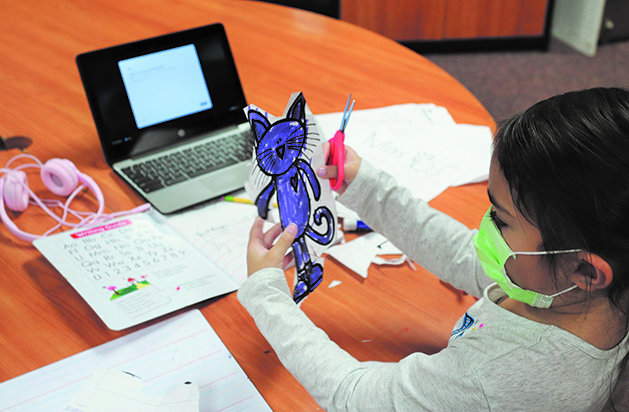
“As a staff, we feel so needed. We’re all learning to navigate this unprecedented time together,” she continued. “We have five different elementary schools represented among our K-5 kids. We do our best to keep up with each student’s daily responsibilities, but there are so few of us and so many of them. It can be overwhelming at times because we know some kids require more one-on-one time, but we have to use our time effectively to do the most good. At the end of the day, we are making a huge impact by creating a safe place for our community’s kids to learn.”
Adapting to the new tech-centric normal is easier for teens who willingly spend much of their free time with their eyes glued to screens anyway, whether it be a computer, TV, cell phone, tablet or video game. A big obstacle for them is less familiarity with Chromebooks and virtual learning programs and more access to a consistent internet connection. Within the rezzy landscape of Tulalip, stable internet and adequate bandwidth can be difficult to come by under the best of conditions.
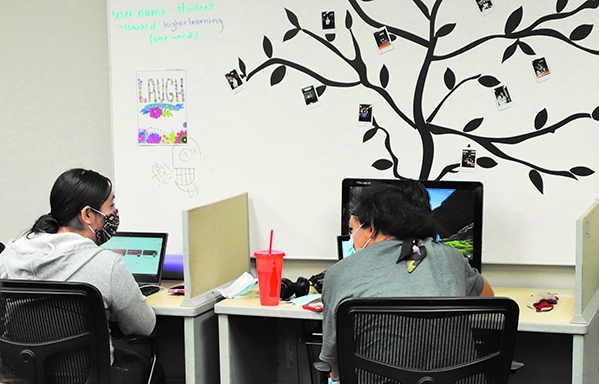
Network upgrades and additional Wi-Fi hot spots at the Teen Center make it a quality alternative for homebound teenagers looking to focus on their school work. Plus, there is support offered by both peers and staff, many of whom are recent graduates of the same Marysville School District curriculum.
“It’s been pretty cool because there are people here to guide us with our school work when we’re confused and have questions,” shared 9th grader Image Enick. “For those with working parents, there is no one at home to assist with assignments, but here at the Teen Center there are plenty of people we are comfortable with asking questions. I haven’t had any difficulty with my online classes or getting kicked off because of bad internet either.”
“We are so proud of the kids here,” added tribal advocate Courtney Jefferson. “We’ve been averaging 40 to 60 a day. They have been taking the initiative to prioritize their education and haven’t needed to be redirected to engage in their online classes. They’ve been getting themselves into their learning spaces, taking ownership of their rooms here in the building, and being productive with their time.”
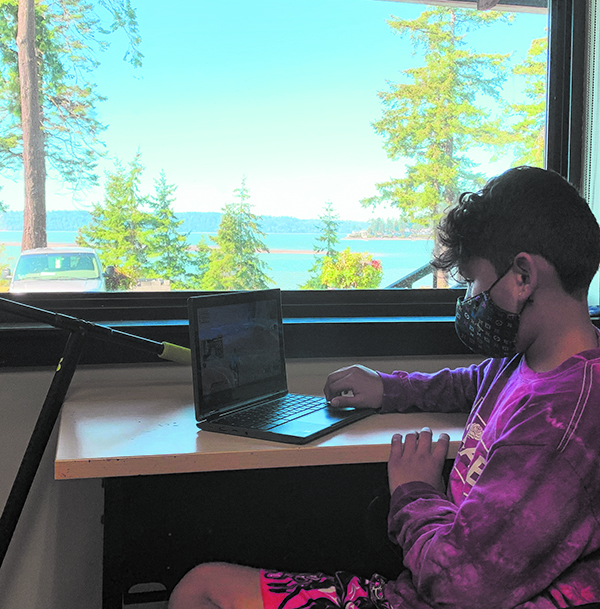
The Tulalip distance learning sites continue to adapt and find creative ways to provide additional support to our students. Both locations are a safe space for students to access the internet, connect to WI-FI, or use a desktop. They each provide daily meals as well. Most importantly, the sites allow students to build a routine, with consistent support and resources that effectively promote scholastic achievement.
The Tulalip Education staff are also available to provide support and resources to students who are not currently attending the facilities. Feel free to contact any of the programs if you have additional questions:
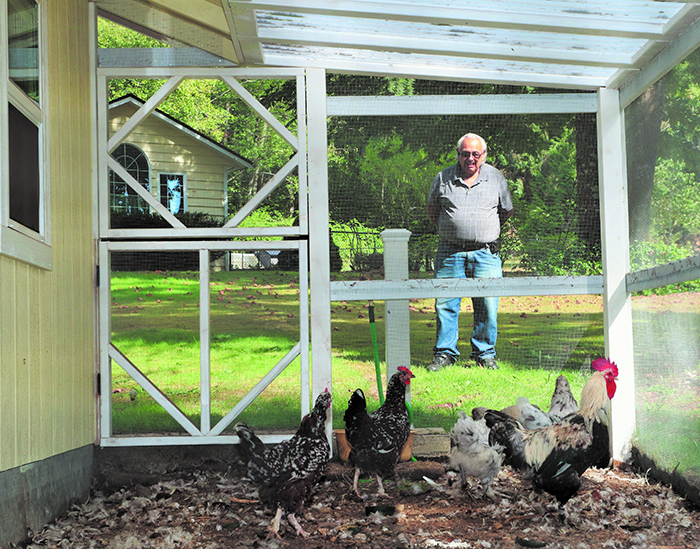
By Micheal Rios, Tulalip News
Earlier this summer, Tulalip elder Terry Parker Sr. was sitting on his front porch when inspiration struck. He thought to himself how wonderful it would be if his beloved chickens had an area to themselves in the front yard, with a clear line of sight from the porch.
“I called my son Torry who operates a construction maintenance company and let him know of my idea,” recalled Terry. “He said he had a young Tulalip man in mind, and that this would be a good solo project for him.”
The young man was Gerald Williams. A recent graduate of TERO Vocational Training Center, he was eager to further develop his construction skills while demonstrating everything he learned under the tutelage of TVTC instructors.
“Gerald came to my house and we talked about the design and specific dimensions I had in mind for the coop. He was quick to grasp my idea and make it into a reality,” said Terry.
And so Gerald got to work. Nearly two months of hard sweat and labor under the summer sun later, he completed a pretty elaborate coop for the Mr. Parker’s chickens. Complete with ample storage space, outdoor range for the chickens to stretch their feathers, and a running water spigot.
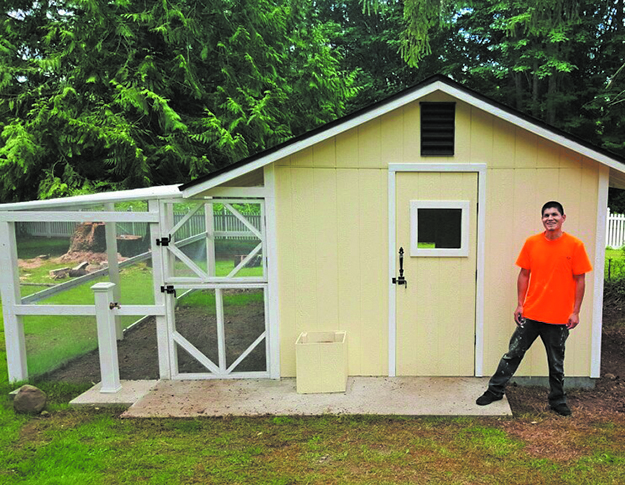
After painting his completed project a nice mellow yellow color, Gerald beamed with pride when Terry took in the finished product a few weeks ago.
“It’s exactly what I wanted. The quality is top notch and made to withstand our Washington weather,” Terry said from his front porch while admiring his new chicken coop. “Gerald is just a fantastic person. Doesn’t talk too much, just gets down to work every day and does his best.”
At 74-years-old, Terry thoroughly enjoys keeping chickens. They give him a daily routine to adhere to and now being able to watch them from his front porch, they bring additional peace of mind. The relationship is healing as well. Terry takes great care of his chickens, giving them an eye-catching living environment and good feed so they’ll lay many eggs.
“Their eggs are medicine. With my diabetes, eating eggs everyday helps keep my blood sugar down and [improves insulin sensitivity],” explained Terry. “Keeping chickens is something my wife and I enjoy very much. We can’t thank Gerald enough for building us this amazing coop. My hands go up to him.”
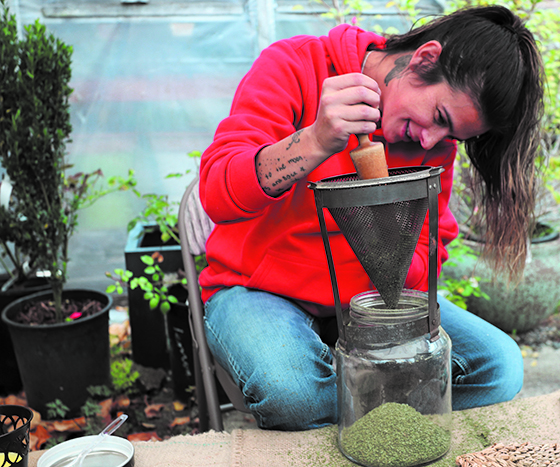
By Micheal Rios, Tulalip News
Herbal medicine is one of the oldest teachings we have. Human beings have supported holistic health and wellness with the use of plants and herbs that naturally work synergistically with our minds, bodies, and spirits since the dawn of time. What could be a more amazing way to support your optimal well-being than by using nature’s gifts?
“This is what is so wonderful about herbal nutrition and using plants in a culturally appropriate and traditional way to support our wellness,” marveled Veronica “Roni” Leahy, Diabetes Care and Prevention Program coordinator at the Tulalip Health Clinic. Her dedicated team hosted several plant-based craft making tables at Garden Treasurers organic farm on Wednesday, September 16. “This is such a precious opportunity to talk about plants and how important they are for the overall health of our bodies. This work truly is making an impact on preventing diabetes and other chronic diseases.”
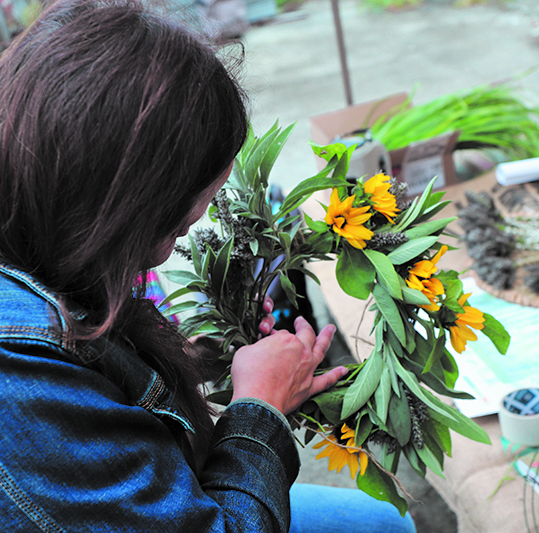
Our bodies were designed to exist with nature, which is why it should come as no surprise that herbal medicine continues to be an effective way to support wellness. For countless generations, we’ve incorporated herbs into our food culture and used them foundationally to create medicines to remedy the most common ailments. Whether you realize it or not, plants have a deep-rooted effect on the way we feel, both physically and spiritually. We quite literally feel better and get an energy boost by simply allowing ourselves to be immersed by plant power. It’s the way nature intended.
For Tulalip families and health clinic patients who ventured to Garden Treasures and took advantage of September 16’s u-pick garden day, they were treated with an opportunity to learn about plant-based crafting. Think of it as chicken soup for the soul, but instead of chicken soup its locally grown lavender, lemongrass and berry blends.
Amy King brought her two daughters, Kimberly and Grace, to the hands-on event to learn more about healthier food options and was pleasantly surprised to see the craft tables. After making their rounds through the farm and picking a wide-range of fresh produce, they took a seat and got to work making bundles of dry lavender.
“It was a little difficult because I’ve never made one before, but it was fun learning. I want to hang mine by my bed or put it next to my pillow,” said 12-year-old Grace.
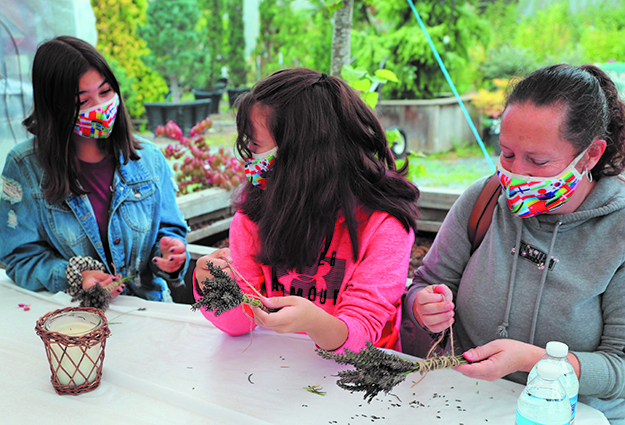
Lavender is a flowering plant in the mint family that’s easily identified by its sweet floral scent and stunning shade of purple. It’s commonly used for medicinal and therapeutic benefits, namely to improve sleep and reduce blood pressure. Lavender is also a great natural remedy for everyday stresses that can take a toll on your mental health. There’s plenty of research that suggests the purple herb has positive effects on mood, stress, anxiety and depression.
As an aspiring chef, 15-year-old Kimberly felt her mood become more and more joyous as she finished her lavender bundle and began looking forward to some creative cooking with all her garden harvesting.
“The cooking process is more fun when you can handpick your own ingredients,” she said. “Getting fruits, vegetables, and herbs straight from the garden means you’re cooking with the freshest ingredients and making healthier meals. Walking through the gardens and seeing all the different options, it’s easy to think creatively and get a lot of ideas. I plan on experimenting with what I picked today and making a chicken stir-fry.”
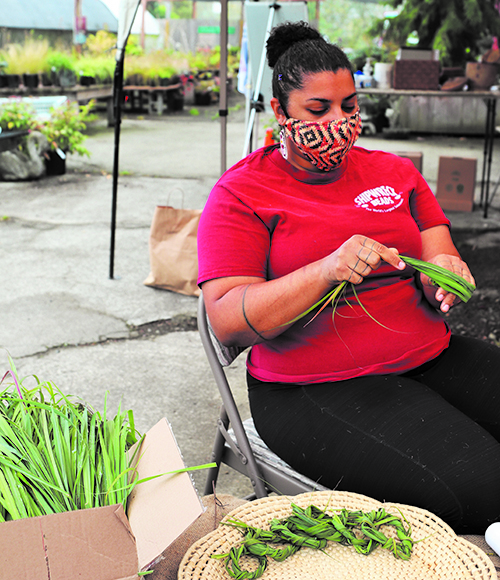
With the summer season officially over and Pacific Northwest temperatures already in the mid-60s, we’re back to a near permanent weather forecast of dreary with a chance of rain showers. The quick turn in weather has brought about legitimate concern from medical experts that seasonal depression will pack some extra oomph this fall. A simple mood enhancer to help combat the effects of less sunlight and colder temperatures is a daily hot cup of lemongrass tea.
Naturally growing in these parts and conveniently found at the health clinic’s Wellness Garden, lemongrass can alleviate depression and anxiety when enjoyed as an herbal tea. Its pleasant, citrusy taste is a like a reminder of bright and cheerful days. This perennial plant is packed full of antioxidants, good for digestion, regulates high blood pressure, and can boost your immune system.
“It’s important, especially as we approach cold and flu season, to stay hydrated and strengthen your immune system to stay healthy. Tea is an effective strategy and it’s easy to make,” explained indigenous chef Britt Reed, creator of Food Sovereignty is Tribal Sovereignty, as she wove lemongrass into palm-sized wreaths. The mini green wreaths can be easily placed into a hot cup or teapot, steeped for 10-15 minutes, and then enjoyed.
“What I enjoy the most about these opportunities is sharing the plant stories and watching the people’s interest grow as they learn more about the many health benefits of local plants,” reflected Roni after another successful event sharing traditional knowledge and assisting community craft makers.
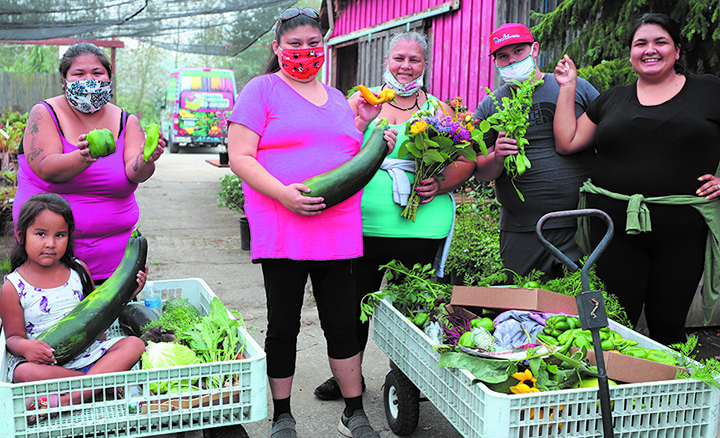
One such participant was Lummi elder Anita Rutherford. She shared that she’s attended every Garden Treasures u-pick day hosted by the Diabetes Care and Prevention Program thus far and looks forward to attending the final two on September 30 and October 17 as well.
“I’ve been a member of the diabetes program ran by Roni since the beginning, some 5 or 6 years now, and I’m happy to say my diabetes is under control because of this program’s guidance,” shared Anita. “They’ve taught me how to properly monitor my blood sugar level and how to view food as my best form of medicine.”
The quest for optimal health and wellness begins with discovering a vibrant lifestyle based on nature’s gifts. Whether it be eating more fruits and vegetables in every day meals or crafting traditional medicines with locally grown flowers and herbs, the power of plants is undisputed.

Beautifully designed and expanded main casino set to open in early 2021
TULALIP, WA – The new Quil Ceda Creek Casino’s big lineup of gaming options will include the debut of new table games and 50% more gaming machines when it opens in early 2021.
More than twice the size of the current property, the new 126,700 square-foot casino will boost gaming excitement with three new table games (for a total of 16) and the addition of 500 gaming machines – bringing the total to 1,500. The new Quil Ceda Creek Casino and multi-story garage is situated on 15 acres of Tulalip Tribal land located directly off I-5 exit 199.
Two brand new titles coming to the gaming floor are “EZ Baccarat” – a fast, easy-to-play game following the same game play format as baccarat, and Craps with Fire Bet. Spanish 21 Progressive and i-Roulette, an electronic chipless version of Roulette, will also go live, joining Double Deck Blackjack, Roulette, Free Bet Blackjack, Fortune Pai-Gow Progressive and Ultimate Texas Hold’m Progressive.
Expanded gaming offerings at the new casino will be complemented with new casual dining experiences, including made-to-order menu selections at “The Kitchen,” an innovative food hall concept, and an exciting a la carte dining experience at “The Landing.” The new casino will include an expanded entertainment lounge and three full-service bars serving craft cocktails, regional beers, Northwest wines and appetizers.
The current Quil Ceda Creek Casino facility will remain fully operational until the new casino opens to the public in early 2021. More information on the new Quil Ceda Creek Casino and a livestream look at construction can be found at quilcedacreekcasino.com/NewQCCCasino.